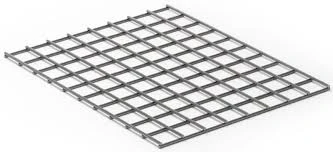-
+86 15030157877
-
sales@galvanizedmetalmesh.com
செப் . 23, 2024 05:59 Back to list
angle steel
The Versatility and Applications of Angle Steel
Angle steel, also known as angle iron, is a structural steel product that has a distinctive L shape. It is produced in various sizes and thicknesses, making it a versatile material used in a wide range of construction and engineering applications. This article explores the characteristics, advantages, and common uses of angle steel.
Characteristics of Angle Steel
Angle steel is characterized by its right-angle configuration, which provides excellent support and stability in various structural applications. It is typically made from carbon steel, stainless steel, or alloy steel, ensuring considerable strength and durability. The dimensions of angle steel are defined by two legs or flanges, which can be equal or unequal in length. Standard sizes usually range from 1 inch to 8 inches in leg length, with thicknesses from 1/8 inch to 1 inch.
One of the key properties of angle steel is its high strength-to-weight ratio. This characteristic allows it to bear heavy loads while remaining lightweight, making transportation and installation easier. Additionally, angle steel is resistant to corrosion, especially when treated with protective coatings, which enhances its longevity and suitability for outdoor applications.
Advantages of Using Angle Steel
There are several advantages to using angle steel in construction and manufacturing
. Its structural integrity allows it to withstand significant stress and load, and it can be combined with other materials to form reliable frameworks. This makes angle steel a preferred choice for scaffolding and supports in industrial settings.Furthermore, angle steel is relatively easy to work with. It can be cut, drilled, or welded into various shapes and configurations, providing flexibility for custom projects. This adaptability is particularly beneficial in construction, where precise measurements and unique designs are often required. The availability of pre-cut and pre-drilled angle steel profiles also streamlines the assembly process, reducing labor time and costs.
angle steel

Another notable benefit is its cost-effectiveness. Angle steel is generally more affordable compared to other structural steel products, making it an economical choice for both small projects and large-scale construction.
Common Applications of Angle Steel
The applications of angle steel are vast and diverse. In the construction industry, it is commonly used to create frameworks for buildings, bridges, and towers. Its strong structural properties make it essential for reinforcing walls, roofs, and floors. Additionally, angle steel is widely used in manufacturing, serving as bases for machinery, equipment support, and conveyor systems.
In the realm of automotive and shipbuilding, angle steel components are pivotal in structural frames and supports. The agricultural industry also utilizes angle steel in the construction of barns, silos, and storage facilities due to its durability and strength.
Moreover, angle steel is often found in furniture production, where it serves as a sturdy support for tables, shelves, and benches. This versatility allows it to bridge the gap between industrial applications and everyday use, showcasing its essential role in modern design and architecture.
Conclusion
In summary, angle steel is a fundamental component in construction, engineering, and manufacturing. Its high strength, cost-effectiveness, and adaptability make it suitable for a myriad of applications. As industries continue to evolve, the demand for reliable and versatile materials like angle steel will undoubtedly persist, ensuring its prominence in the future of structural design. Whether in towering skyscrapers or modest furniture, angle steel remains a testament to the strength and adaptability of modern engineering.
-
Stainless Steel Wire Mesh Roll Wholesale & Manufacturers – Quality Exporters
NewsJul.26,2025
-
High Quality 3D Curved Welded Wire Mesh Fence for Security and Aesthetics
NewsJul.25,2025
-
High-Quality Security Window Screen Mesh for Home & Office Protection
NewsJul.24,2025
-
Hexagonal Gabion for River Bank Protection and Retaining Walls
NewsJul.23,2025
-
High Quality Stainless Steel Wire Mesh Roll & Supplier Wholesale Price
NewsJul.22,2025
-
Hexagonal Gabion Mesh: Durable Stone Cages for Landscaping
NewsJul.22,2025



